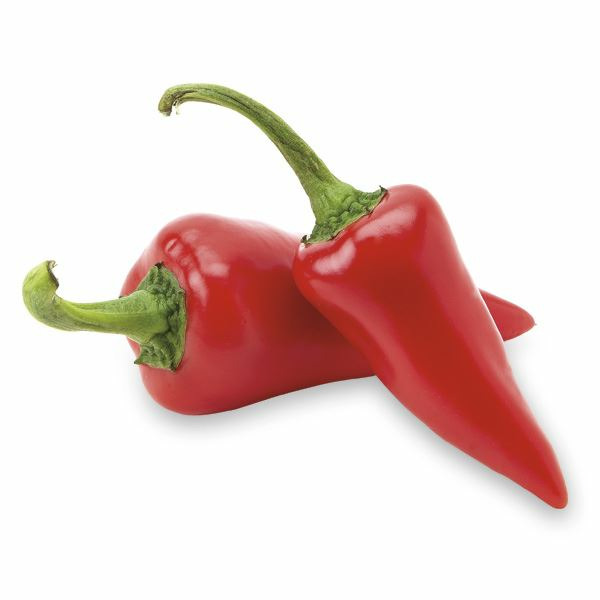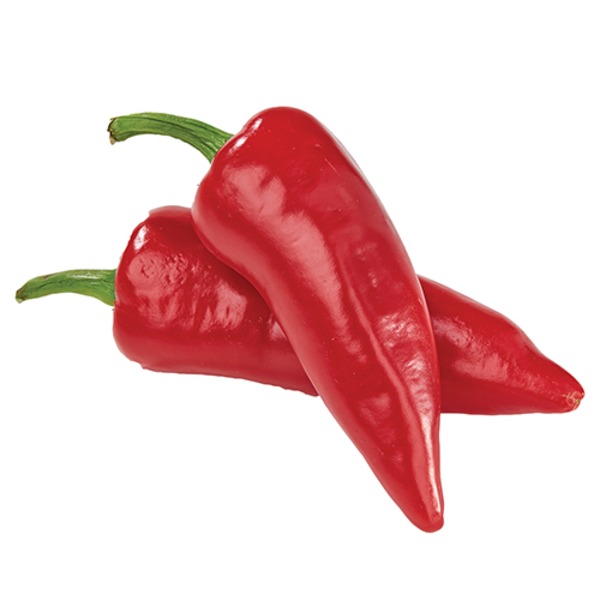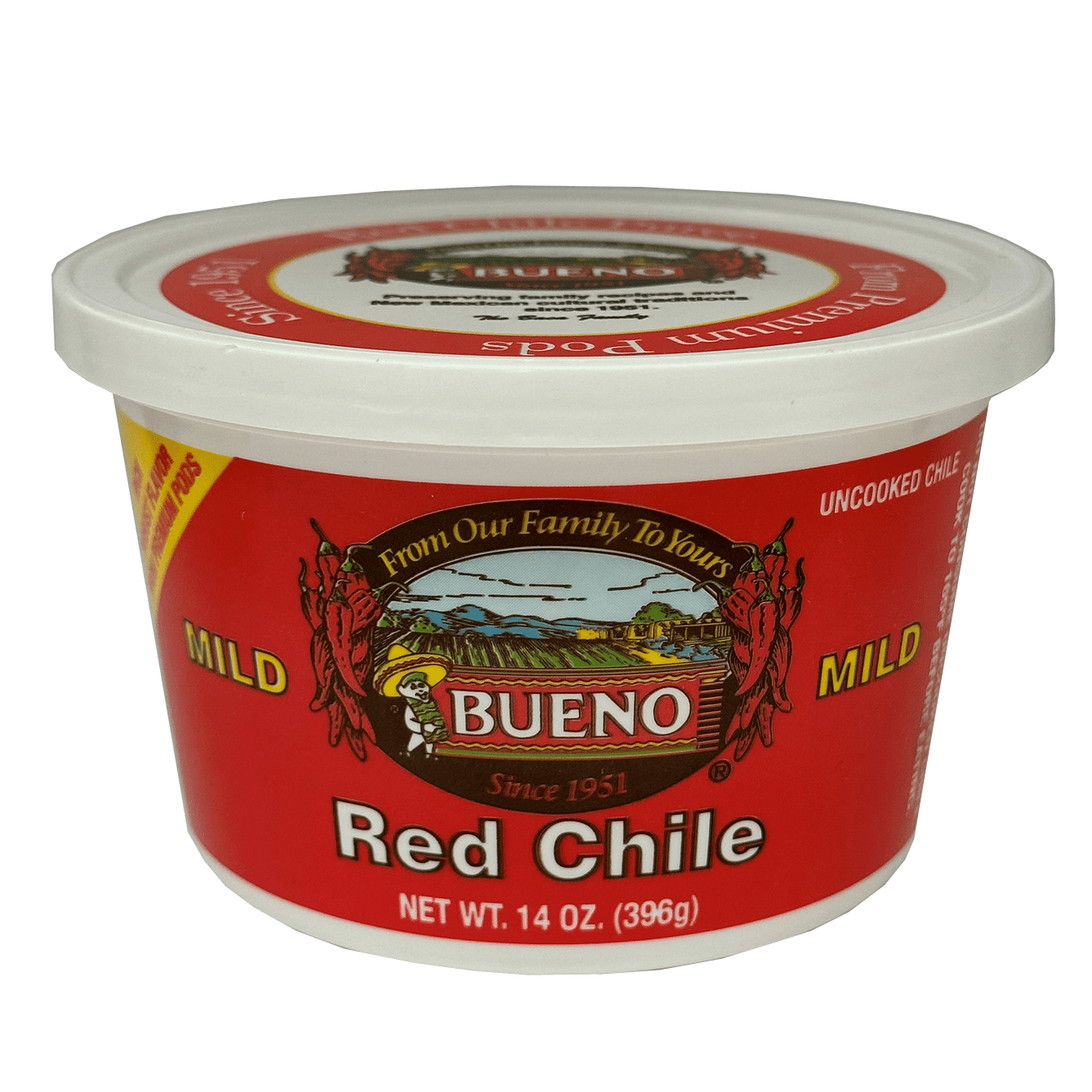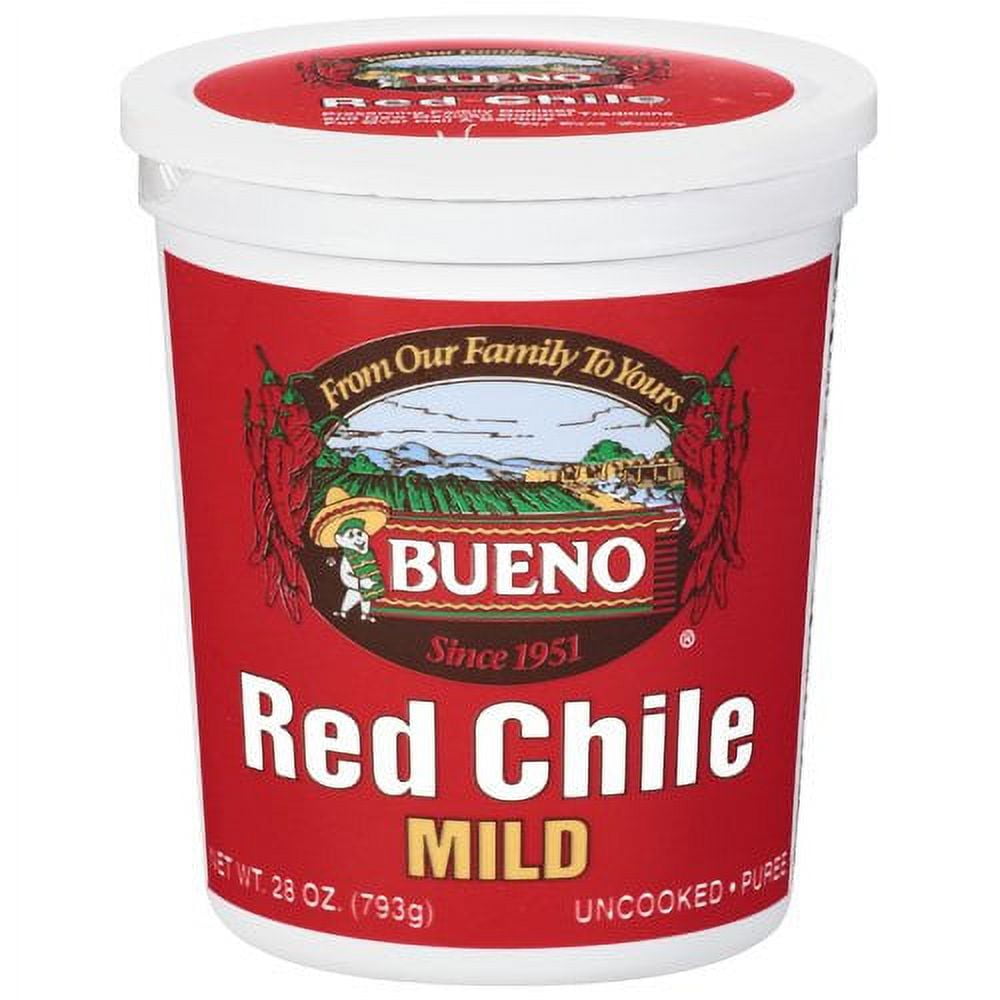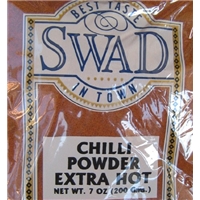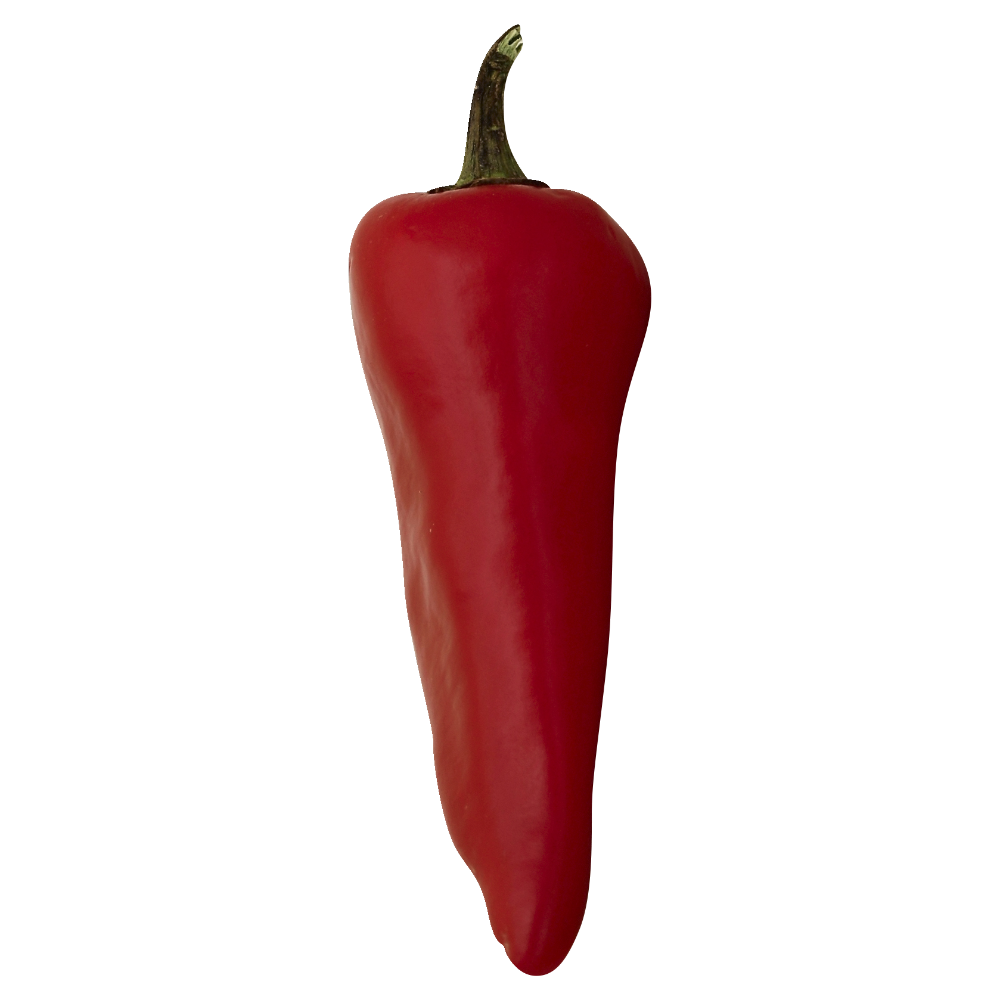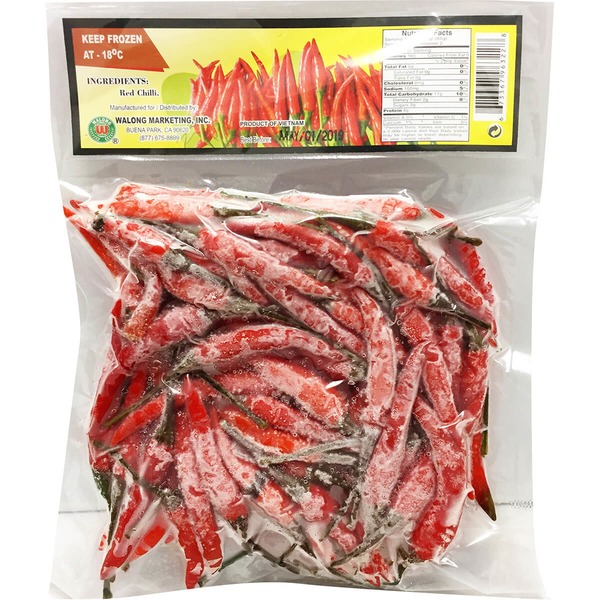CONDIMENTS AND SAUCES
MAIN DISHES
SIDE DISHES
Red Chili Pepper
Red chili pepper, a popular ingredient in many cuisines worldwide, is a spicy fruit from the Capsicum family that is used to add both color and heat to dishes. There are numerous varieties, ranging from mild to extremely hot, such as the well-known cayenne and jalapeño, as well as the more fiery ghost and habanero peppers. Hailing from warmer climates, such as Mexico, the Caribbean, and Southeast Asia, these peppers have become a staple in many cuisines due to their versatility and robust flavor.
Chili peppers are commonly used to flavor meats, poultry, seafood, and vegetables, as well as to create hot sauces and salsas. Capsaicin, the compound responsible for the fruit's heat, can be adjusted by removing the seeds and veins within the pepper, ensuring the right level of spice for your dish. Additionally, due to their antimicrobial properties, chili peppers can help preserve food and extend its shelf life. Whether fresh, dried, or powdered, red chili peppers are a must-have ingredient for any home cook looking to add zest and excitement to their culinary creations.
79%
CARBS
4%
FAT
17%
PROTEIN
112 Red Chili Pepper Products
Used In 101 Recipes
6
Sizzling Thai Basil Chicken Stir-fry
4
Savory Chimichurri Steak Skewers
3
Sweet and Spicy General Tso's Chicken
1
Sun-kissed Californian Sushi Bowl
1
Flavorful Georgian Chakhokhbili
4
Scrummy Chili Chicken
Quick and Easy Umami Ramen with Veggie Ribbons
1
Sizzling Chili Garlic Shrimp
Red Chili Pepper Is Frequently Used With
Red Chili Pepper FAQ
Red chili peppers are an essential ingredient in many cuisines around the world, however, handling and using this spice could be tricky sometimes. The heat of the pepper comes from the compound capsaicin, which is primarily located in the seeds and ribs. Removing seeds and ribs can control the heat level. This is a common error among inexperienced cooks who assume that the flesh of the pepper is the hottest part, leading to unexpectedly spicy dishes. To get the most out of red chili peppers, consider toasting them before use, this draws out the delicious, complex flavors often overshadowed by their mere heat. Care should be taken while chopping or handling the peppers, as the capsaicin can cause a burning sensation on skin and especially in eyes. Always wash hands thoroughly after handling, or wear gloves to avoid direct contact.
A lesser-known tip: If you consume a dish that's way too spicy for your palate, consuming dairy products like milk or yogurt can neutralize the heat due to casein, a protein in dairy that binds to capsaicin and washes it away.
Why are red chili peppers so spicy?
How can I reduce the spiciness of a red chili pepper?
What is the correct way to chop a red chili pepper?
Can I use red chili pepper in any dish?
What should I do if I get a burning sensation after touching a red chili pepper?
Why are some red chili peppers hotter than others?
Can I use dried red chili pepper instead of fresh?
How can I tone down a dish if I've used too much red chili pepper?
What's the nutritional value of red chili peppers?
What's the best way to use red chili pepper for seasoning?
Is red chili pepper the same as cayenne pepper?
Expiration & Storage Tips
When does red chili pepper expire?
Fresh red chili peppers typically last about one to two weeks when stored in the fridge. If your chili peppers are dried, they can be kept in a cool, dark pantry for up to a year. Red chili pepper powder, on the other hand, has a shelf life of two to three years when unopened. Once opened, try to use it within six months for maximum flavor. If frozen, red chili peppers can last up to a year.
How do you tell if red chili pepper is bad?
A sure sign that your fresh red chili peppers have turned bad is a soft texture and a dull color. They may also develop dark spots and start to have a wrinkled surface. If mold appears, or if they give off an off smell, it's time to discard them. For dried or powdered red chili, if their color has faded, or they have lost their pungency and aroma, consider them past their prime. If you notice any signs of mold or strange smells in the container, that's a clear sign it has gone bad.
Tips for storing red chili pepper to extend shelf life
• Ripe red chili peppers can be stored in the crisper drawer of your refrigerator. Make sure there is some air circulation to avoid any kind of moisture build-up.
• Always keep dried or powdered red chili peppers in an airtight container, stored in a cool, dark place, away from direct sunlight.
• To extend the life of fresh chili peppers, you can dry them out. Hang them in a dry place with good air circulation until they're shriveled and stiff to the touch.
• If you have an abundant amount of fresh chili peppers, consider freezing them. Wash, dry, and deseed them before placing them in a zip-top plastic bag.
EXPIRES WITHIN
11 - 21
DAYS
Equivalents
Substitutes

Anaheim Chile

Serrano Pepper

Shishito Pepper

Chili Pepper

Habanero Pepper

Scotch Bonnet Chile

Cubanelle Pepper

Hatch Green Chile
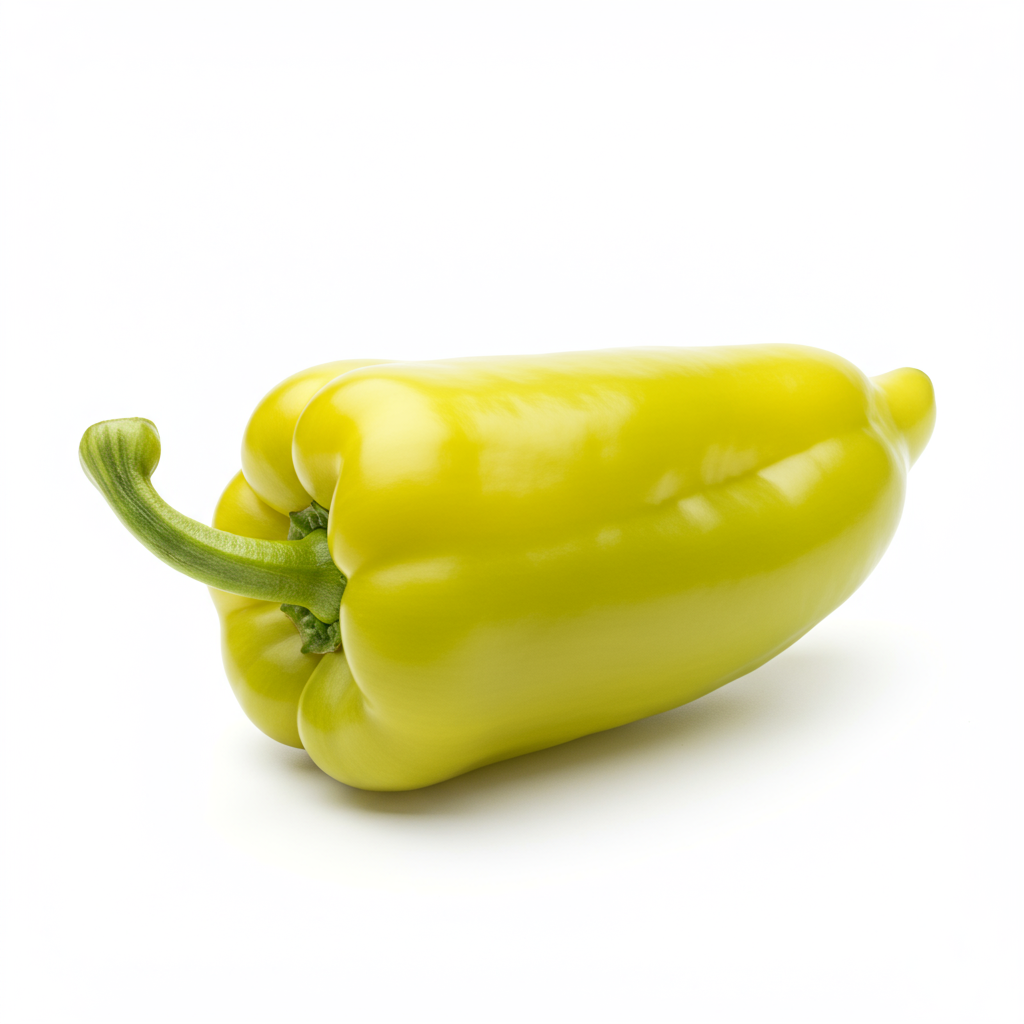
Hungarian Pepper
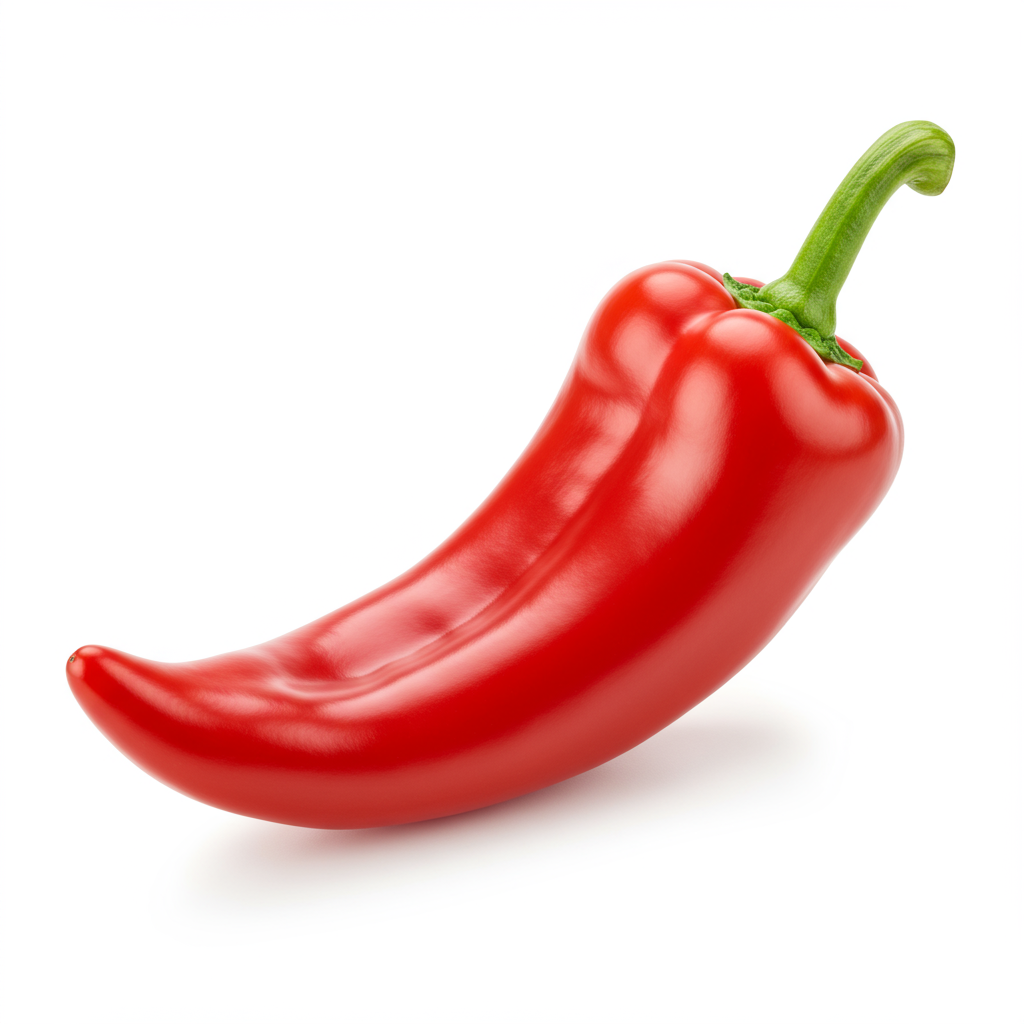
Italian Sweet Pepper
See All
Health Info
Macros
3g
CARBS
0g
FAT
0g
PROTEIN
Allowed on these diets
LOW FAT
HIGH CALCIUM
VEGETARIAN
KETO
PALEO
WHOLE 30
MEDITERRANEAN
LOW CARB
VEGAN
LACTOSE FREE
GLUTEN FREE

